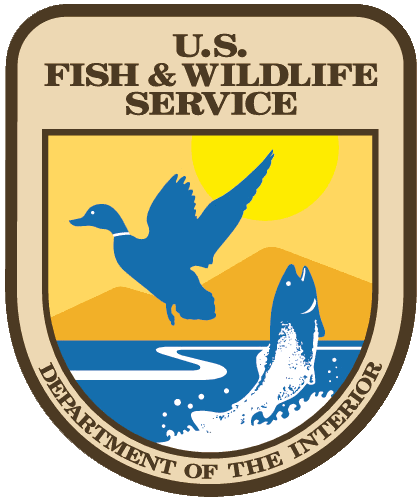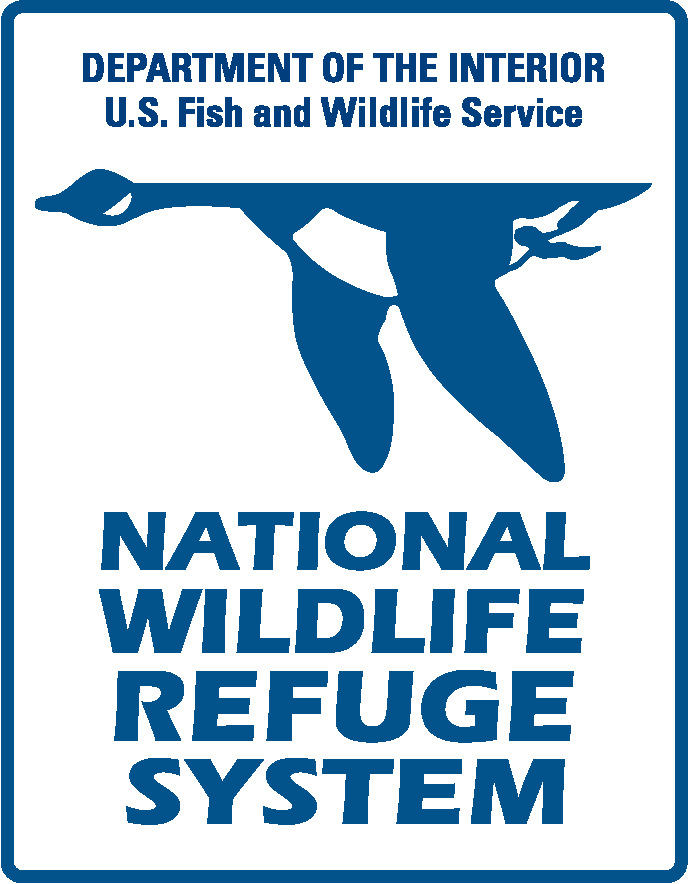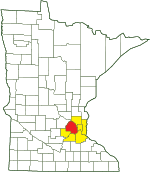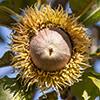Minnesota Valley National Wildlife Refuge
Long Meadow Lake Unit
About • Location • Activities • Ecology
About |
||
Ownership |
||
|
||
Links |
||
Overview |
||
The Long Meadow Lake Unit is one of eight units that make up the Minnesota Valley National Wildlife Refuge. It is the most visited of the eight units. It lies on the north bank of the Minnesota River just south of the Minneapolis-St. Paul International Airport. Fort Snelling State Park lies just across the river. There are more than 18 miles of hiking trails. Casual visitors can hike the 1 mile Hillside Trail or the 1.3 mile Bass Ponds Interpretive Trail. For a somewhat longer walk, there is the 7.3 mile north loop trail. Serious hikers can take the 16 mile south loop trail. |
||
History |
||
|
||
Management |
||
In the spring of 2013 USFWS began an oak savanna restoration project on 5 acres near the Bloomington Visitor Center. |
||
Comments |
||
|
Activities |
||||||||||||||
Hiking Biking Mountain biking Horseback riding Picnicking Camping Swimming Boating Canoeing Birding Nature photography Geocaching Cross country skiing Skate-skiing Winter hiking Snowshoeing Snowmobiling |
||||||||||||||
Trails |
||||||||||||||
|
||||||||||||||
Hunting and Fishing |
||||||||||||||
No public hunting opportunities are found at Long Meadow Lake, Black Dog Units, Bloomington Ferry Unit, Upgrala Unit, Chaska Unit, or San Fransisco Unit |
Ecology |
|||||
Ecological Classification |
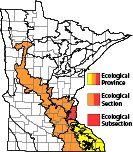 |
||||
| Ecological Province | Eastern Broadleaf Forest Province |
||||
| Ecological Section | Minnesota & NE Iowa Morainal |
||||
| Ecological Subsection | St. Paul-Baldwin Plains and Moraines |
||||
| Land Type Association | Pig’s Eye Alluvial Plain |
||||
Native Plant Communities* |
|||||
Black Ash - (Red Maple) Seepage Swamp Bulrush Marsh (Northern) Red Oak - White Oak - (Sugar Maple) Forest Sedge Meadow Silver Maple - (Virginia Creeper) Floodplain Forest |
|||||
| * Source: The Minnesota Biological Survey, Minnesota Department of Natural Resources, Division of Ecological Resources | |||||
Natural Features |
|||||
|
|||||
Visitor Photos |
||
Share your photo of this destination. |
||
This button not working for you? |
||
Kirk Nelson |
||
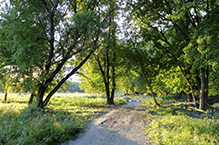
|
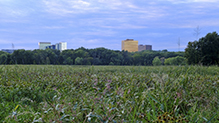 |
|
| Bloomington office buildings | ||
| Trail | ||
|
||
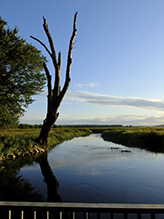 |
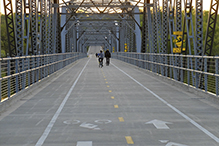 |
|
The Old Cedar Avenue Bridge is open for bicycles and pedestrians. |
||
|
||
Bridge and stream |
||
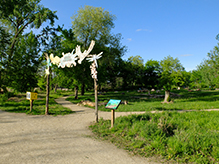 |
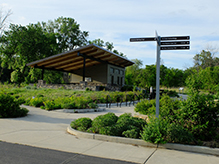 |
|
Nature Play Area near the Old Cedar Avenue Bridge Trailhead |
New picnic shelter at the Old Cedar Avenue Bridge Trailhead |
|
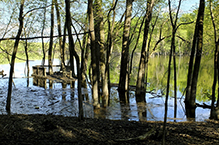 |
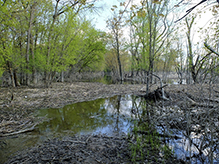 |
|
Spring Flooding |
||
|
Spring Flooding | |
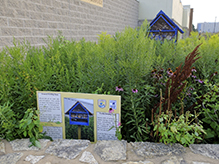 |
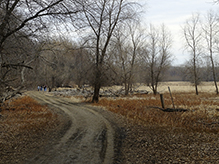 |
|
Bee House near the entrance to the Visitors’ Center |
Long Meadow Lake Trail | |
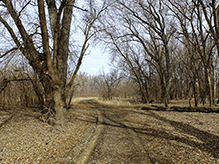 |
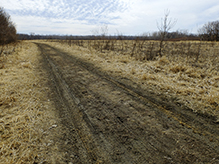 |
|
Long Meadow Lake Trail |
||
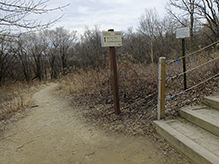 |
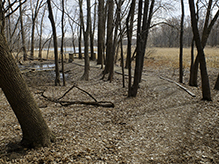 |
|
Spur Trail leading to Long Meadow Lake Trail |
Observation Platform Overlooking Peterson Pond | |
MinnesotaSeasons.com Photos |
||
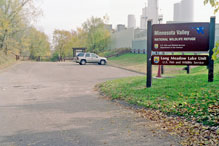 |
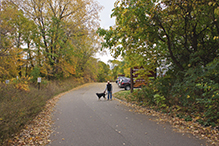 |
|
Bass Ponds parking |
Bass Ponds parking | |
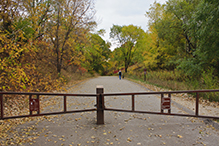 |
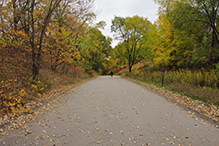 |
|
Bass Ponds entrance |
Bass Ponds entrance | |
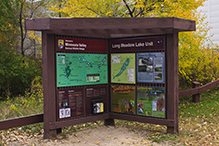 |
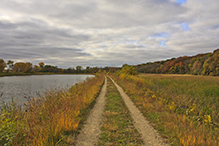 |
|
Information kiosk |
Alternate Trail, Long Meadow Lake service road | |
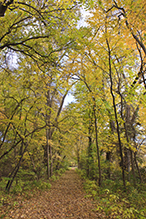 |
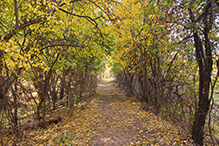 |
|
Bass Ponds Interpretive Trail |
||
|
||
|
||
Bass Ponds Interpretive Trail |
||
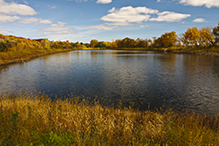 |
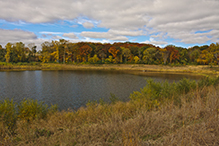 |
|
Bass Pond (shallow lake) |
Bass Pond (shallow lake) | |
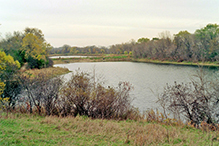 |
||
Bass Pond (shallow lake) |
||
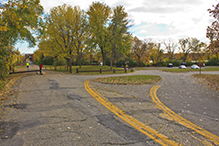 |
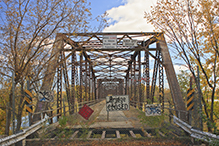 |
|
Old Cedar Ave. Bridge |
Old Cedar Ave. Bridge | |
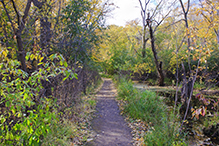 |
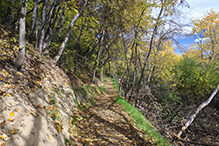 |
|
Bluff Trail |
Bluff Trail | |
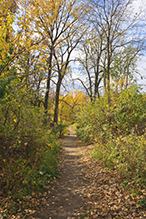 |
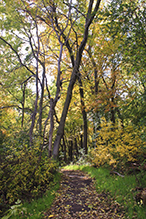 |
|
Bluff Trail |
Bluff Trail | |
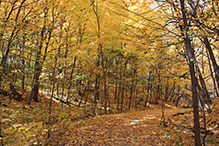 |
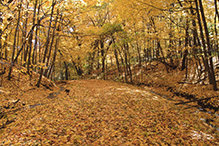 |
|
Mound Springs Spur Trail |
Mound Springs Spur Trail | |
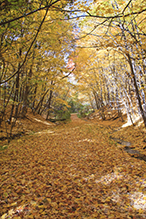 |
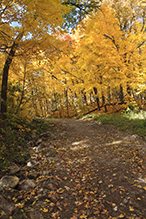 |
|
Mound Springs Spur Trail |
Mound Springs Spur Trail | |
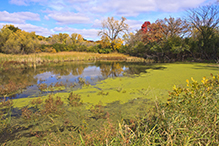 |
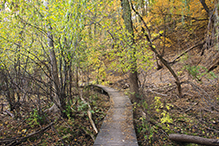 |
|
Pond |
Boardwalk | |
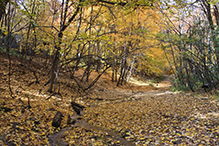 |
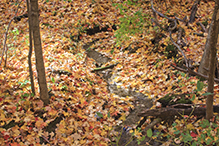 |
|
Intermittent stream |
Intermittent stream | |
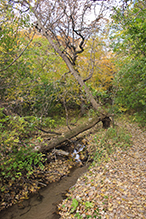 |
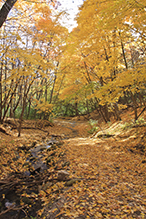 |
|
Intermittent stream |
Intermittent stream | |
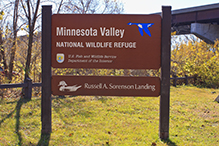 |
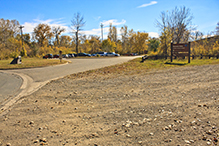 |
|
Russel A. Sorenson Landing |
Russel A. Sorenson Landing | |
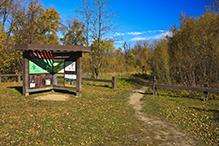 |
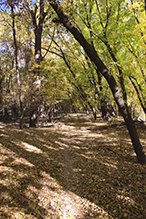 |
|
Russel A. Sorenson Landing |
||
|
||
|
||
|
Sand dunes in Silver Maple Floodplain Forest | |
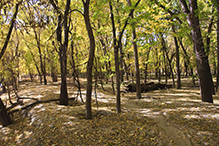 |
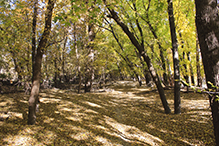 |
|
Sand dunes in Silver Maple Floodplain Forest |
Sand dunes in Silver Maple Floodplain Forest | |
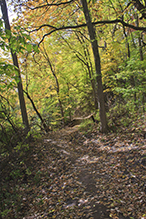 |
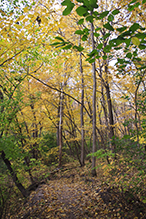 |
|
Red Oak - White Oak - (Sugar Maple) Forest |
Red Oak - White Oak - (Sugar Maple) Forest | |
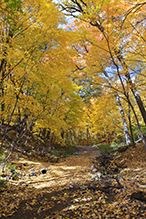 |
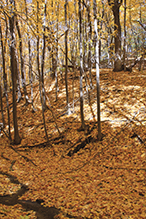 |
|
Red Oak - White Oak - (Sugar Maple) Forest |
Red Oak - White Oak - (Sugar Maple) Forest |

Slideshows |
Long Meadow Lake |
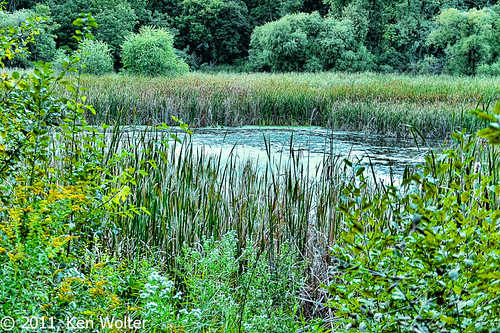
|
About
Long Meadow Lake, Bloomington Minnesota |
Long Meadow Lake |
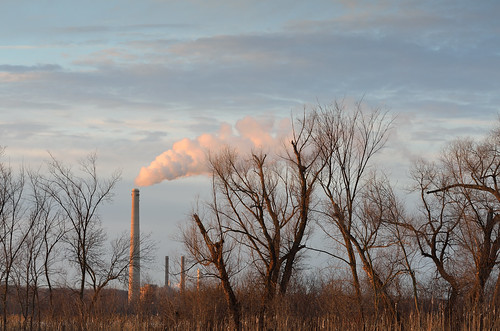
|
About
part of the Minnesota River Valley Nature Reserve. |

Visitor Videos |
||
Share your video of this destination. |
||
This button not working for you? |
||
|
Other Videos |
||
Trumpeter Swans..Long Meadow Lake, MVNWR..Bloomington, Mn. |
About
Published on Sep 28, 2012 Trumpeter Swans pair for life, and each pair returns to its nesting area in spring as soon as the weather allows. Territories are established that average 30 acres, sometimes more than 100 acres, and are vigorously defended...the adults even exclude their own offspring of previous years. The male performs such territorial defense, but the female participates in mutual "triumph ceremonies" after territorial disputes and also helps defend the nest site. Both sexes help construct the rather bulky nest, which may require a week or more. The eggs are laid at two day intervals, and no incubation is performed until the clutch is complete. Thereafter the female performs all the incubation, while the male defends the nest. Most of the cygnets hatch within a few hours of each other and are led from the nest within 24 hours of hatching. The nest may later be used for resting or brooding, but often the brood is led some distance from the nest for rearing on quiet and secluded ponds.The fledging period is approximately 100 days which takes up the entire summer and makes it impossible for birds to re-nest in the event of nest failure.. Typical breeding habitat consists of large, shallow marshes to shallow lakes, with an abundance of submerged plants and emergent vegetation. The emergent plants provide important nesting cover, and the submerged vegetation is the major food source. |
Trumpeter Swans..Long Meadow Lake..MNVWR..Bloomington, Mn. |
About
Published on Sep 28, 2012 Trumpeter Swan nests are greatly scattered, owing to the extreme territorial behavior of the adults, and nest sites are usually used for several years. Island locations are preferred over shoreline sites, and when nests are built in emergent vegetation the water is usually between 12 and 36 inches deep. Sometimes muskrat houses or beaver lodges serve as nest sites.. Swans lay between 3 to 9 eggs, averaging about 5. Eggs are creamy white and somewhat granular. The incubation period is 32 - 37 days, usually about 34 days. |
Long meadow lake minnesota |
About
Uploaded on Feb 7, 2011 A small creek that comes out of the lake and flows half a mile to the minnesota river. Only fell thru the ice once lol. |
28 JUL 2013 North American River Otter |
About
Published on Jul 28, 2013 I saw these otters in Long Meadow Lake in the MN Valley NWR opposite Hog Back Pond. |

Visitor Sightings |
|
Share your sightings or comments about of this destination. |
|
This button not working for you? |
|
Kirk Nelson |
||
Amphibians |
||
 |
||
Birds |
||
Blue-winged Teal (Spatula discors) Brown-headed Cowbird (Molothrus ater) Canada Goose (Branta canadensis) |
 |
|
Fungi and Lichens |
||
 |
||
Insects and Arachnids |
||
 |
||
Mammals |
||
northern river otter (Lontra canadensis) |
 |
|
Plants |
||
 |
||
MinnesotaSeasons.com Sightings |
Visits |
11/3/2005 10/18/2014 |
Amphibians |
||
Birds |
||||||||||||
|
||||||||||||
eBird Field Checklist – Headquarters eBird Field Checklist – Long Meadow Lake Trail eBird Field Checklist – Bass Ponds eBird Field Checklist – Old Cedar Ave. Bridge eBird Field Checklist – Artesian Well |
||||||||||||
American Black Duck (Anas rubripes) American Coot (Fulica americana) American Robin (Turdus migratorius) Black-capped Chickadee (Poecile atricapillus) Blue Jay (Cyanocitta cristata) Canada Goose (Branta canadensis) Dark-eyed Junco (Junco hyemalis) Double-crested Cormorant (Phalacrocorax auritus) Downy Woodpecker (Dryobates pubescens) Great Blue Heron (Ardea herodias) Green-winged Teal (Anas crecca) Hairy Woodpecker (Leuconotopicus villosus) Mourning Dove (Zenaida macroura) Northern Cardinal (Cardinalis cardinalis) Northern Flicker (Colaptes auratus) Northern Shoveler (Spatula clypeata) Sandhill Crane (Antigone canadensis) |
||||||||||||
Fishes |
||||||||
|
||||||||
Fungi and Lichens |
||
Insects and Arachnids |
||
bald-faced hornet (Dolichovespula maculata) little yellow (Pyrisitia lisa lisa) |
 |
|
Mammals |
||
American beaver (Castor canadensis) American red squirrel (Tamiasciurus hudsonicus) eastern chipmunk (Tamias striatus) eastern gray squirrel (Sciurus carolinensis) |
 |
|
Plants |
||
Minnesota Biodiversity Atlas and Minnesota Biological Survey Vegetation Releves Plant List |
||
Plants frequently found in: Black Ash - (Red Maple) Seepage Swamp WFn57a Bulrush Marsh (Northern) MRn93a |
||
|
American basswood (Tilia americana var. americana) American stinging nettle (Urtica gracilis ssp. gracilis) black-eyed Susan (Rudbeckia hirta var. pulcherrima) bur oak (Quercus macrocarpa var. macrocarpa) Canada goldenrod (Solidago canadensis) Canada lettuce (Lactuca canadensis) Canada moonseed (Menispermum canadense) Canada wildrye (Elymus canadensis) Canadian wild ginger (Asarum canadense) common burdock (Arctium minus) common evening primrose (Oenothera biennis) common milkweed (Asclepias syriaca) common mullein (Verbascum thapsus ssp. thapsus) common reed (Phragmites australis) common yarrow (Achillea millefolium) crown vetch (Securigera varia) eastern redcedar (Juniperus virginiana var. virginiana) eastern wahoo (Euonymus atropurpureus var. atropurpureus) gray dogwood (Cornus racemosa) green foxtail (Setaria viridis) hoary alyssum (Berteroa incana) Japanese knotweed (Reynoutria japonica) narrow-leaved cattail (Typha angustifolia) narrow-leaved purple coneflower (Echinacea angustifolia) northern pin oak (Quercus ellipsoidalis) northern red oak (Quercus rubra) plains cottonwood (Populus deltoides ssp. molinifera) prickly rose (Rosa acicularis ssp. sayi) quaking aspen (Populus tremuloides) red osier dogwood (Cornus sericea ssp. sericea) silky dogwood (Cornus obliqua) sugar maple (Acer saccharum ssp. saccharum) swamp milkweed (Asclepias incarnata ssp. incarnata) velvet-leaf (Abutilon theophrasti) Virginia waterleaf (Hydrophyllum virginianum var. virginianum) white campion (Silene latifolia ssp. alba)
Abutilon theophrasti (velvet-leaf) Acer saccharum ssp. saccharum (sugar maple) Achillea millefolium (common yarrow) Arctium minus (common burdock) Asarum canadense (Canadian wild ginger) Asclepias incarnata ssp. incarnata (swamp milkweed) Asclepias syriaca (common milkweed) Berteroa incana (hoary alyssum) Cornus obliqua (silky dogwood) Cornus racemosa (gray dogwood) Cornus sericea ssp. sericea (red osier dogwood) Echinacea angustifolia (narrow-leaved purple coneflower) Elymus canadensis (Canada wildrye) Euonymus atropurpureus var. atropurpureus (eastern wahoo) Geranium maculatum (wild geranium) Hydrophyllum virginianum var. virginianum (Virginia waterleaf) Juniperus virginiana var. virginiana (eastern redcedar) Lactuca canadensis (Canada lettuce) Menispermum canadense (Canada moonseed) Oenothera biennis (common evening primrose) Phragmites australis (common reed) Populus deltoides ssp. molinifera (plains cottonwood) Populus tremuloides (quaking aspen) Quercus ellipsoidalis (northern pin oak) Quercus macrocarpa var. macrocarpa (bur oak) Quercus rubra (northern red oak) Reynoutria japonica (Japanese knotweed) Rosa acicularis ssp. sayi (prickly rose) Rudbeckia hirta var. pulcherrima (black-eyed Susan) Securigera varia (crown vetch) Setaria viridis (green foxtail) Silene latifolia ssp. alba (white campion) Solidago canadensis (Canada goldenrod) Solidago flexicaulis (zigzag goldenrod) Tilia americana var. americana (American basswood) Typha angustifolia (narrow-leaved cattail) |
||
Reptiles |
||||||||
|
||||||||
 |
||||||||

Birding Hotspots
The Long Meadow Lake Unit contains two birding hotspots, the Bass Ponds and Old Cedar Avenue Bridge. The best time for birders to visit is from early March to late June when migrating waterfowl and warblers rest here.
Created: Last Updated: © MinnesotaSeasons.com. All rights reserved. |
